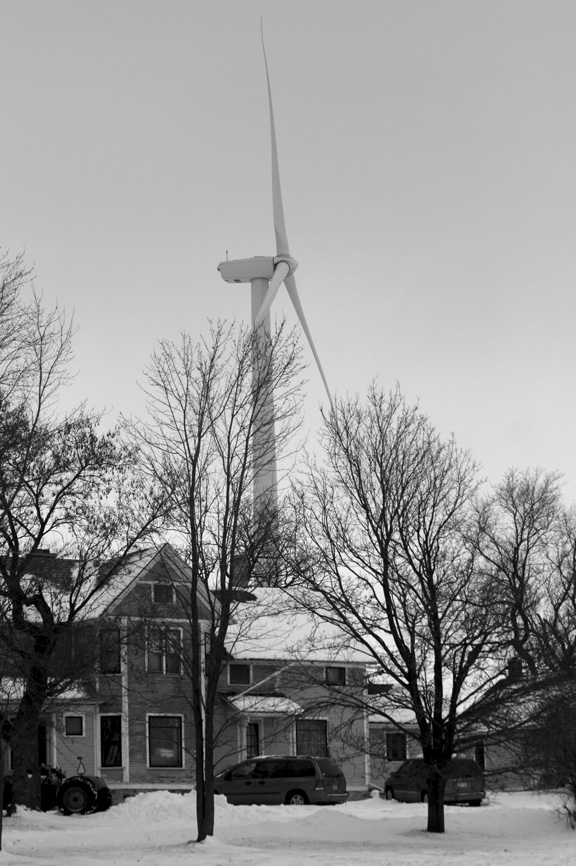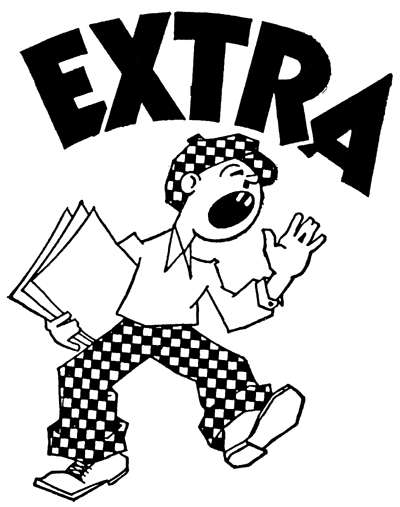Entries in wind lease (7)
5/29/11 Oh, THAT'S what a wind lease 'gag-order' looks like AND Component failure timeline and other delights: From the wind industry's point of view: pesky O&M costs biting into profits

WHAT'S BLACK AND WHITE AND YOU CAN'T TALK ABOUT IT FOR THE REST OF YOUR LIFE?
Sorry. I signed a wind lease. I can't discuss it.
NOTE FROM THE BPWI RESEARCH NERD: Better Plan has been collecting copies of wind leases for the last few years and has yet to find one that didn't contain a confidentiality agreement ---also known as a 'gag order'
Landowners who share wind leases are taking a clear risk, but more are coming forward anyway. One farmer who shared his contract said, "I don't care anymore. I just don't want this to happen to anyone else."
The section below is copied from a wind lease contract that came our way. The landowner who signed it agreed to allow noise, vibration, shadow flicker and any other disruption the turbines might cause to take place on his property. If he has problems with these things he can't talk about it because the gag order requires that he:
Not to talk about the contents of lease to anyone.
Not to talk about the construction or operation of the turbines.
Not not speak to reporters or anyone in the media or issue statements or press releases unless the wind company gives the landowner their written permission.
The landowner also had to agree that the gag order would still apply long after the turbines are gone. This line says it all: "This section shall survive the termination of expiration of this lease" It means this gag order is forever.
The landowner can talk to his lawyer or accountant and certain others about the contract but only after they agree to a gag order too.
STRAIGHT FROM THE CONTRACT:
Confidentiality
(Landowner) shall maintain in strictest confidence, for the sole benefit of (wind developer) all information pertaining to the terms and conditions of this lease, including, without limitation, the construction and power production of the wind farm.
Without first obtaining written permission from the (wind developer), (the landowner) shall not issue any statements or press releases or respond to any inquires from news media regarding such matters.
(Landowner) shall maintain the strictest confidence, for the sole benefit of the (wind developer) all information pertaining to the terms and conditions of this lease, including, without limitation, the financial terms hereof.
This section shall survive the termination of expiration of this lease.
Nothing in this section shall prohibit sharing or disclosing information with any party's (lawyer) accountants or current or prospective investors, purchases, lenders or as required by law, provided that the party sharing or disclosing such information requires the recipient to maintain the confidentiality of such disclosed information
FROM THE DEVELOPERS POINT OF VIEW
Wind Energy Update: Wind Farm O&M - Best Practice On Cost Containment Elusive
The constantly evolving wind turbine market means that new components must continually be demonstrated, with little assurance of their availability five years down the track in the event of component failure.
Posted on: Monday, 23 May 2011
SOURCE: "Wind Energy Update" VIA PR WEB
When it comes to turning a profit throughout the lifecycle of a wind farm, just a one percent improvement in operations and maintenance can make a huge difference to the bottom line, according to the latest Wind Energy Update Operations & Maintenance Report 2011.
(PRWEB) May 23, 2011
When it comes to turning a profit throughout the lifecycle of a wind farm, just a one percent improvement in operations and maintenance can make a huge difference to the bottom line, according to the latest Wind Energy Update Operations & Maintenance Report 2011. [Click here to download report]
The challenge, however, is how to achieve that one percent improvement in the face of operations and maintenance (O&M) costs that are double or even triple initial projections.
O&M costs under-estimated
On the basis of an exhaustive industry survey, the latest report finds that wind farm return on investment is around -21 percent. This underperformance is attributable to over-estimation of power production and underestimation of O&M costs say the report’s authors.
In the early days, the industry had costed out O&M at roughly 0.5c/kw over a turbine’s 20-year life. But as newer models and their respective components continued to flood the market, this has turned out to be far from the reality.
The report highlights that wind O&M costs can now be expected to increase on average 253 percent over the 20-year life of the various wind machines.
“Given that every wind turbine comprises an average of 8000 components, it is not surprising that higher-than-expected rates of component failure continue to plague the industry,” say the report's authors.
Understanding the root cause
The constantly evolving wind turbine market means that new components must continually be demonstrated, with little assurance of their availability five years down the track in the event of component failure.
Of even greater concern is that, if not properly addressed early on, component failures can persist through new product generations. It is therefore vital, despite pressure from competitors to continuously push the boundaries on nameplate capacities, that both the onshore and offshore industries adopt a backwards compatibility approach when evolving each model.
A thorough understanding of failure trends can also provide a basis for the best O&M practices for a given system, say the reports authors.
Sketching a component failure timeline, the authors characterise earliest wind turbine designs (1987-91) by their gearbox failures, while wind turbines built between 1994-99 are characterized by electronic power failures.
Turbines manufactured between 2000-2004, again exhibit problems with generators and gearboxes. More recent models are plagued with issues linked to retrofits.
Aftermarket potential
But there is a silver lining. Some component suppliers to the OEM wind turbine market view the aftermarket as a new, long-term opportunity.
“Advances in turbine design may make certain parts obsolete, but with a typical projected turbine life of 20 years or more, the aftermarket will provide ongoing spares demand for these suppliers for some time to come”, says the report.
The report also notes that in the long-run, as the wind industry matures and begins to validate the success of condition and performance monitoring systems, as direct drive turbines replace gear-box driven turbines, and as the industry begins to collaborate on O&M, reductions in long-term O&M costs are the most likely scenario.
DOWNLOAD Wind Energy Update Operations & Maintenance Report 2011.
3/10/10 What's it like to live in a Wisconsin wind project? It's been two years, are you used to it yet? AND How were you getting those transmission towers here?
What's it like to live in the 86 turbine Invenergy Forward Energy wind project?
 Home in Invenergy Forward Energy project, Fond du Lac County--- photo by Gerry Meyer 2009
Home in Invenergy Forward Energy project, Fond du Lac County--- photo by Gerry Meyer 2009
Here are two recent notes to Better Plan from the Meyer Family. They are residents of the Invenergy Forward Energy wind project near the Town of Byron in Fond du Lac county.
Since the turbines went online near their home two years ago, they have had trouble sleeping, increased blood pressure, ringing and crackling in the ears and headaches. Cheryl has been taking sleeping medication, something she never needed before the turbines started up.
The closest turbine to their home is less than 1600 feet.
From Cheryl Meyer
March 8, 2010
"The turbines are so loud that our dog, Trigger, goes to the backroom window and barks at them.
It sounds like a snowplow driving around the house full bore with its blade down.
I find it interesting the last few days that when I go out with the dog he goes so far down the sidewalk and then turns and looks north to the turbine. He stares at it a few seconds and then moves on.
But they have been usually loud the last two days. Just thought I would let you know.
Cheryl
March 9, 2010
From Gerry Meyer:
Cheryl has a really bad headache.
She has tried Imatrex or the shot three times in three days, so today went to the Doctor....
The message Cheryl wrote you was when I was in LA. I remember her telling me that the turbines sounded like snow plow coming through the house.
You could add that Trigger barked because that is what he does when a vehicle comes in the driveway. The turbine was so loud he thought a plow was in the driveway.
Gerry
This video was shot by Gerry Meyer from his porch.
NOTE FROM THE BPWI RESEARCH NERD:
On February 18th, I spent another night in the Meyer home to get a better idea of what they are living with and was kept up well past three in the morning by a thumping from the turbines that seemed to come from all directions.
The only thing I can compare it to is the bass sound you hear coming from a car with powerful speakers. You feel the noise as well as hear it. It was impossible to sleep until it finally stopped.
The typical turbine jet sounds and whooshing were louder outdoors than indoors, but the low thumping was penetrating and much louder inside the home than outside the home. This was especially so on the second floor.
The Meyer family home is a typical wood framed old farm house found throughout rural Wisconsin. The Meyer's young son often goes to bed with two radios playing, one on either side of his head to counteract the turbine noise.
 WANT MORE? CLICK HERE TO READ TODAY'S "WIND TURBINES IN THE NEWS"
WANT MORE? CLICK HERE TO READ TODAY'S "WIND TURBINES IN THE NEWS"
